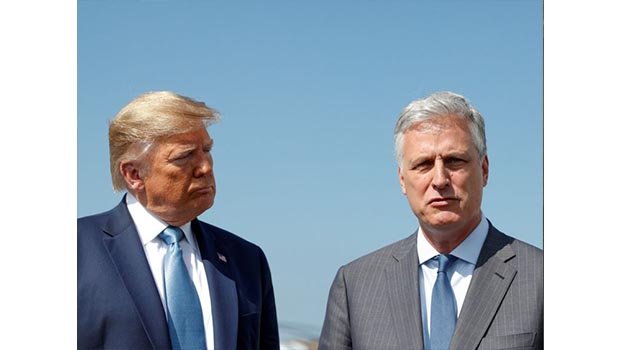How Trump’s national security will look like

In the three years since President Donald Trump’s election, the United States has seized the initiative from its adversaries all over the world. We decimated Daesh as a military force. The president fulfilled a campaign promise to walk away from the nuclear deal with Iran, which was funding terrorism. He restored America’s partnerships with Arab governments both to constrain Iran and to protect US interests in the Middle East without drawing the country into another ground war.
The president used a firm hand with Moscow, expelling Russian spies, increasing sanctions, closing Russian consulates and providing arms to Ukraine. With North Korea, he combined maximum economic pressure and military deterrence with a willingness to engage in personal diplomacy to advance peace.
Most important, as outlined in his 2017 National Security Strategy, the president has begun aligning our foreign and national security policies with the principal challenge facing the United States: prolonged peacetime competition with great powers such as China.
Put simply, the president has executed a fundamental shift in US foreign policy to ensure that it recognises and protects the concrete interests of the American people.
As his new national security adviser, I have commenced changes to the National Security Council staff designed to assist the president as he continues to execute his foreign policy vision for the country.
For most of the United States’ history, presidents ran national security and foreign policy by overseeing the State Department, the Navy Department and the War Department.
After the Second World War, defending America in the modern world required new intelligence agencies, the unification of the armed services under a massive new Defence Department, and later the creation of new civilian organisations with some defence functions, such as Nasa and the Energy Department.
Congress created the National Security Council to assist presidents in managing the complexities of this expansion of the federal government. The 1947 law establishing the NSC, which originally consisted of the president, vice president, and the secretaries of state and defence, stated: “The function of the Council shall be to advise the president with
respect to the integration of domestic, foreign, and military policies relating to the national security.”
The word “advise” is fundamentally important. While the statutory members of the NSC, in some cases, run departments that execute foreign policy, the NSC staff at the White House was intended to coordinate policy rather than run it. My job as the national security adviser is to distil and present to the president the views and options that come from the various departments and agencies. The NSC then ensures that those agencies actually execute the president’s decisions. This is the “honest broker” model of the national security adviser, best personified by Brent Scowcroft, who held the post during both the Gerald Ford and George H.W. Bush administrations.
During the Obama administration, the NSC ballooned to well over 200 policy staffers. By comparison, a mere 12 NSC policy staffers helped President John F. Kennedy deal with the Cuban missile crisis in 1962. As President Jimmy Carter handled multiple crises in the late 1970s, the NSC staff totalled just 35 professionals. During the first term of the George W. Bush administration, with two major wars in Iraq and Afghanistan underway, the policy staff was about 100 people.
After consulting several of my predecessors and analysing the NSC’s current configuration, I have determined that the agency can and should be streamlined, in the process restoring the NSC to its historical mission.
With the president’s approval, we will reduce the NSC staff, making it more effective by reaffirming its mission to coordinate policy and ensure policy implementation. The NSC staff should not, as it has in sthe past, duplicate the work of military officers, diplomats or intelligence officers. With that in mind, we will be able to reduce 174 policy positions to well under 120 by early 2020.
We will further combine some functional directorates that duplicate other White House offices, while refocusing our emphasis on the directorates that cover geographic regions, which have traditionally been the heart of the NSC. The international economics team, for example, will now rightly be managed by Larry Kudlow, director of the president’s National Economic Council.
To achieve these policy staffing goals, the great majority of the men and women who serve on America’s NSC staff, most of whom are detailed from other departments and agencies, will complete their standard tour of duty.
This reflects the president’s vision for a lean, efficient
government that is focused on the core national interests of the United States.
Robert C O’Brien is the US national security adviser



